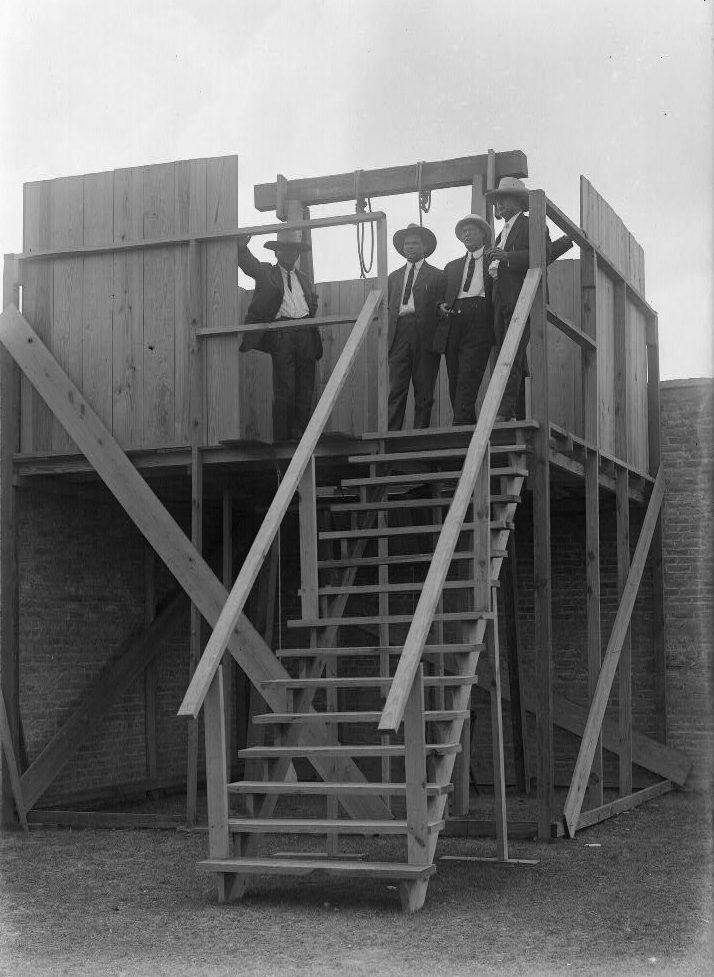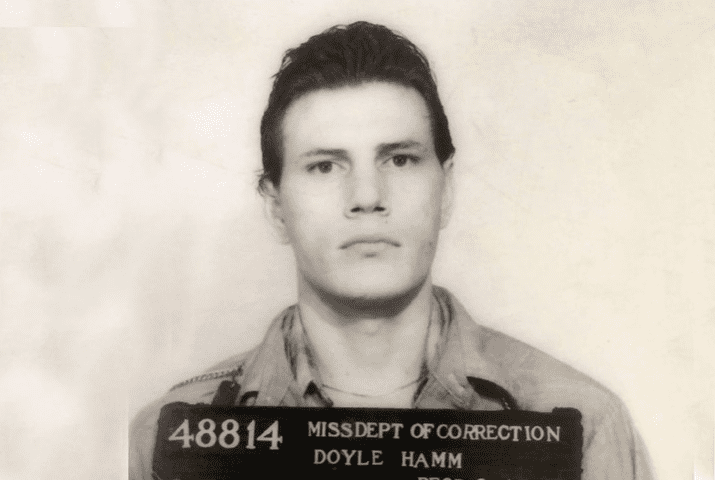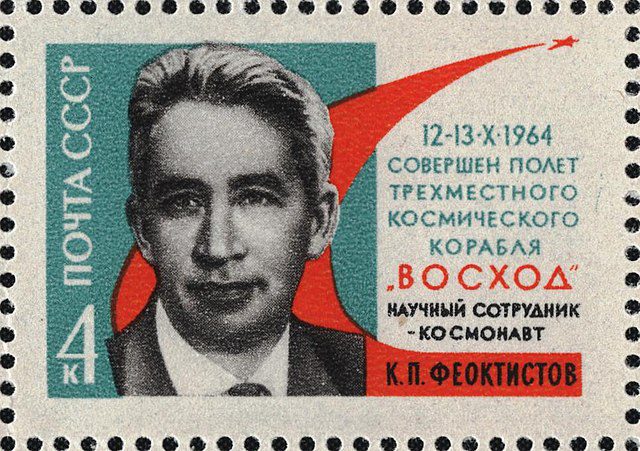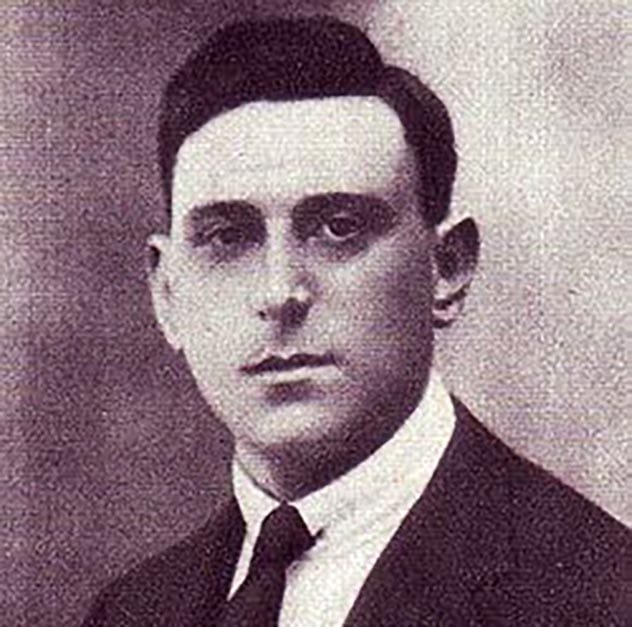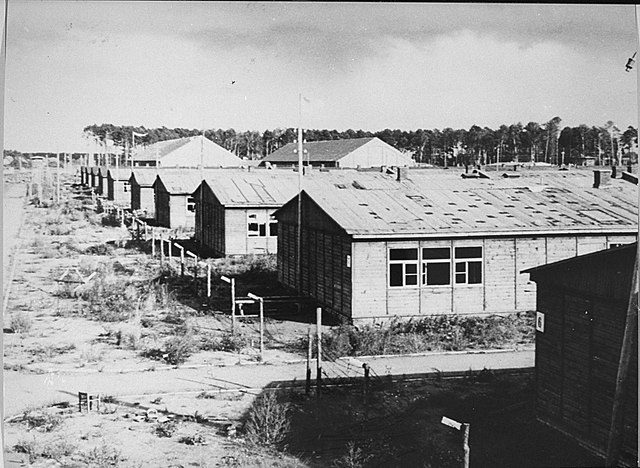See Also: 10 Horrifically Botched Executions [DISTURBING]
10 Miraculous Malfunctions
During the early morning hours of November 15, 1884, a woman named Emma Keyse was found dead in her home near Torquay, Devon, England. She had been murdered, and the house had been set on fire. The only man in the house at the time was John Lee, often referred to as John “Babbacombe” Lee. Due to a cut on his arm, he became a suspect and was charged with Keyse’s murder before long. Lee pleaded not guilty but was convicted and sentenced to death. Despite the circumstances, he had remained calm through the entire trial. When asked why by the judge, Lee replied, “The reason why I am so calm is that I trust in the Lord, and He knows I am innocent.” Lee’s execution was to take place on February 23, 1885, at Exeter Prison. That day, the executioner, James Berry, had tested the scaffold from which Lee was to drop beforehand. Everything worked. Lee, still calm, was led up, hooded, and had the rope placed around his neck. When the executioner asked Lee if he had any final words, Lee simply replied, “No—drop away.” Berry did as he was asked . . . and nothing happened. The trapdoor wouldn’t open. This remained the case even after the men present stomped on it. Lee was taken away, and the device was tested again. Everything worked. Lee was brought back to the gallows and readied for a second attempt. Again, the trapdoor didn’t open. Again, the men stomped on it, to no avail. They tried to execute Lee a third time, with the same results. After this, the chaplain stated that they couldn’t put Lee on the scaffold any more. He was taken back to his cell. No one was quite sure what to do with the man they had thrice failed to hang. Ultimately, Home Secretary Sir William Harcourt declared that Lee would not be executed but would remain in prison for the rest of his life. Nevertheless, the story of his miraculous day at the gallows, coupled with the scant nature of the evidence upon which he was convicted, spurred people to campaign for his release. Lee finally became a free man in December 1907.[1]
9 Cruel And Unusual Punishment
As Doyle Lee Hamm was led to the lethal injection chamber at Alabama’s Holman Correctional Facility on February 22, 2018, he had been on death row for approximately three decades. In 1987, he murdered a hotel worker named Patrick Cunningham. Prior to his scheduled execution, it had been determined that due to past drug use as well as treatment for cancer, his arms would not be suitable for needle insertion to deliver the lethal drugs. Hamm’s legs, however, could be used. When the time came, the IV team pored over both of Hamm’s legs, looking for a suitable vein but not finding one. This didn’t stop them from trying to inject him, though. Hamm was pierced multiple times, first in the legs and, after that failed, in the groin area. The IV team members were described as “mashing” needles into his flesh, probing for veins. The pain was such that Hamm began to wish they’d succeed. His bladder is believed to have been punctured during the debacle, as is his femoral artery, based on the amount of blood that appeared at one point. Finally, as the clock neared midnight, the execution was called off, as the condemned man’s death warrant was about to expire. According to Hamm, one of the doctors wanted to keep trying to inject Hamm, this time through his feet, and a prison official had to order the man out of the room. Hamm soon filed a civil rights action. His lawyer, Bernard Harcourt, stated that the botched lethal injection amounted to torture. A medical exam of Hamm after the execution attempt documented a number of puncture wounds as well as bruising to his lower extremities. Hamm had reportedly been urinating blood since that night, as well. In March 2018, the state settled with Hamm’s attorney. The precise terms aren’t known, but no further attempt will be made to execute Hamm.[2]
8 Stoning Survivor
According to the UK-based Syrian Observatory for Human Rights, an attempt by members of ISIS to stone a woman to death failed in January 2015. The incident occurred in Raqqa, which was under the control of the terrorist organization at the time. The unnamed woman had been accused of adultery and was to be stoned to death on al-Fredos Street. The lapidation was carried out, and the ISIS members present believed the victim to be dead. But then, the woman stirred and managed to stand up. As she began to flee, one of the men moved to shoot her. However, a sharia judge stopped him, reportedly stating, “Her sentence is done; let her go and repent to her God.” The woman was allowed to live.[3]
7 Spared After Being Pronounced Dead
In October 2013, a man identified only as “Alireza” was to be hanged for smuggling 2.2 pounds (1 kg) of crystal meth into Iran. His execution came just before dawn in the northern city of Bojnurd, where he had been imprisoned. Alireza was pronounced dead after 12 minutes of hanging, and his body was taken to the morgue. The next day, Alireza’s family was to collect his body for burial. However, a worker at the morgue noticed condensation on the plastic wrapped around the condemned man. Alireza was alive. He was immediately taken to a nearby hospital. The Iranian authorities promptly ordered that Alireza be hanged again once he’d recovered. As far as they were concerned, the man wasn’t sentenced to hanging but to death. Humans rights activists disagreed. About a week after news of Alireza’s survival broke, Mostafa Pourmohammadi, Iran’s justice minister, stated that he would not be re-executed.[4]
6 Left Hanging Overnight
Not much is known about this one, but if the account is to be believed, a woman was hanged in 1264, remained hanging until the next day, and survived. The story in question appears in a 16th-century writing, The Natural History of Stafford-shire by Robert Plot: A woman, Inetta de Balsham (also referred to as Judith de Balsham), had been convicted of harboring thieves. For this, she was sentenced to death. De Balsham was hanged at 9:00 AM on a Monday in August, and she was left where she was until sunrise the next day. Amazingly, she survived the ordeal and was eventually granted a pardon. According to Plot, de Balsham’s windpipe may have been ossified (as in bony tissue had formed). This meant that her airway was never compressed in the manner necessary to kill her. Plot described a similar case involving a Swiss man who survived multiple hanging attempts due to ossification in his neck.[5]
5 From A Burial Trench To Space
In October 1964, Konstantin Feoktistov was launched into space along with two others aboard Voskhod 1, the first spaceflight to carry more than one person. It was also the first time men had been sent into space without space suits, and reaching 209 miles (336 km), the flight set a new altitude record. This would not have come to pass had a Nazi’s bullet struck a little higher. Feoktistov grew up in Voronezh, which fell under Nazi occupation during World War II. At 16, he was gathering intelligence for the Red Army. Unfortunately, he was captured by the SS, who chose to execute him with a bullet to the head. The projectile in question passed through Feoktistov’s chin and neck but did not kill him. The Nazis thought he was dead, though, and Feoktistov did nothing to disabuse them of this notion. Later, he crawled out of the burial trench he’d been left in and made his way into Soviet territory. After the war, Feoktistov obtained a doctorate in physics and had quite a successful engineering career. He played a role in the design of the Sputnik satellites, the Voskhod capsule he would later fly in, and other projects. Though he only flew into space once, Feoktistov went on to become the head of the Soviet space design bureau before retiring in 1990, after which he became a professor. Feoktistov passed away in 2009.[6]
4 A Reprieve Granted By Incompetence
In 1872, a condemned prisoner was set to be hanged for the murder of one Thomas Muir aboard a vessel called the Marion Rennie. A contemporary Fiji Times article identifies the murderer only as “Franks,” though a 2019 publication by the same newspaper names him as “Antonio Franks.” Franks’s execution was originally scheduled for Monday, May 27, but it was postponed until the next morning, reportedly because the sheriff found the slated time to be inconvenient. Rain fell overnight, soaking the noose, which had been left out. Before it could be used the next day, the rope had to be dried over a fire. Perhaps this is why when the time finally came to hang Franks, the hangman had to place his foot in the noose and pull hard to make the knot run. All the same, the noose was placed around the murderer’s neck, the trapdoor opened, and Franks dropped. Silence followed. Franks swayed in the breeze, seemingly quite dead. Three minutes after the drop, however, he began to move, followed swiftly by the issuance of gurgling sounds from his throat. Then, Franks spoke, begging to be killed. No one obliged, so Franks, despite being pinioned, managed to reached an arm up and loosen the noose, providing himself with some relief. He spoke again, forgiving the officials for the “black job” they’d done with his hanging and continuing to ask to be put out of his misery. By this point, at least one man in the crowd had fainted from the spectacle. Instead of killing Franks, one of the authorities present rushed onto the scaffold and cut the rope. Franks thudded to the ground, no one having moved to catch him. He was taken back to his cell. Franks did not have to face the gallows again. According to the Fiji Times, he was eventually released and allowed to leave the island.[7]
3 Shot Nine Times
In 1915, Wenseslao Moguel was fighting in the Mexican Revolution. The soldier was unfortunately captured. War leaves little time for any sort of due process, and Moguel received none. He was declared a traitor and promptly sentenced to die by firing squad. Moguel was shot nine times, including a final shot to the head by an officer to ensure that he was dead. He wasn’t. Somehow, Moguel had survived, though he would be left disfigured by the ordeal. His story became more widely known in 1937, when he appeared on the Ripley’s Believe It or Not! radio show as well as in one of Ripley’s “Odditoriums” in Cleveland, Ohio. Moguel became known as El Fusilado, essentially meaning “The Executed One.”[8]
2 Shot 17 Times
It seems firing squads are by no means a guaranteed means of execution, if the survival of Amerigo Dumini is any indication. No stranger to death, the US-born Dumini had served in the Italian army’s 19th Field Artillery Regiment as a volunteer during World War I. In 1924, he was the leader of a group which murdered Giacomo Matteotti, a political enemy of Benito Mussolini. Dumini would serve only 11 months in prison for the murder. During World War II, Dumini was based in Derna, Libya. When the Italians withdrew from Derna in 1941, he stayed behind, running a group of spies and saboteurs. Before long, he was captured by the British. Being a spy, he was to meet his end before a firing squad. Dumini was shot a total of 17 times, but like Wenseslao Moguel, he survived and escaped, eventually making it back to Italy. Dumini would finally receive a life sentence for the murder of Giacomo Matteotti after World War II. He was a free man by 1956.[9]
1 Surviving A Gas Chamber, A Death March, And A Lethal Injection
Suzanna Braun was born into a well-off Jewish family in Kosice, a community which has changed hands several times through history. At her birth, it was part of Czechoslovakia. Today, it’s part of Slovakia. When Suzanna’s life was turned upside down, it was part of Hungary. In April 1944, a few months before Suzanna’s 16th birthday, Kosice was occupied by the Nazis. In June, Suzanna and her family were rounded up with others and sent to Auschwitz-Birkenau. Upon disembarking from the train, Suzanna was greeted with the sight of Dr. Josef Mengele as well as smoke from the chimneys. Nearby were three people who had been hanged by their feet. The males and females were separated at this point; Suzanna’s father’s last words to her were to look after her older sister, Agi, who was in poor health. Suzanna, Agi, their mother, and around 30 other women were stripped naked and herded into the showers. They had been sent into a gas chamber. Some in the group waited for water; others had more of an idea what was going on and began to panic. However, all that came from the walls was a faint smell of gas. After a few minutes, the door opened, and the women were ordered out. The chamber was out of gas. The group were given dresses taken from the dead and trucked to Estonia. From there, they embarked on a death march south among thousands of other women. Suzanna’s mother was shot dead during the trek, after which Suzanna did not speak for a month, but she never forgot her promise to look after Agi. Agi was unable to swim when the prisoners were forced to cross a wide river. Suzanna rigged up a wooden floatation device to carry her sister across. Finally, the death march ended at a concentration camp called Stuffhof. Here, Agi was placed in the infirmary, and Suzanna snuck food to her sister at night. The sisters nearly met their end yet again when the Nazis learned that the Russians were nearing the camp. The Germans tried to kill as many of the prisoners as they could, the chosen method being injections of strychnine and gasoline. An orderly hastily injected one woman after another. As this happened, Suzanna advised Agi and a few other women to turn their arms so that the needle might miss their veins. They did so, but the effects of the poisonous cocktail were still immediate. Suzanna’s hand went numb. Thinking quickly, she grabbed some hay from her bed and used the stalks to pierce her arm. She applied pressure, hoping to drive the poison out. This worked, and Suzanna saved her sister and two other women the same way. Still bleeding, Suzanna dragged Agi to a hill and had to roll her down it. She spotted a Nazi officer approaching immediately after and played dead; the officer kicked Suzanna down the hill. Suzanna and Agi hid in an old cowshed until the Russians arrived the next day. Agi’s feet had to be amputated due to gangrene soon after, but both she and Suzanna survived. They went on to live long, full lives in Israel.[10]
